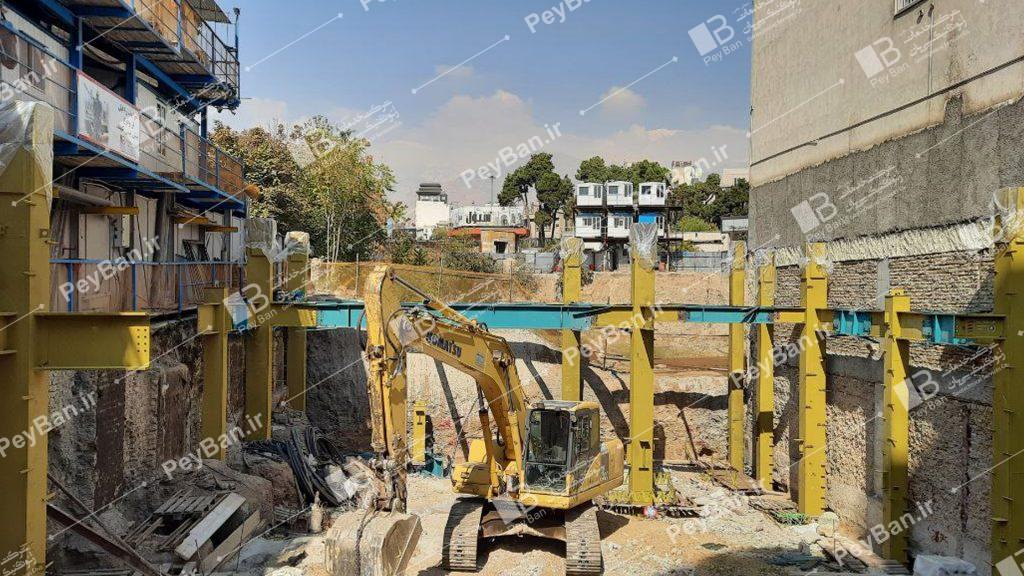Retaining structures
In many construction projects, the ground needs to be excavated so that the walls are vertical or close to vertical. This may be done to build a basement, canal, water source, etc. Lateral pressure on these walls is due to the drift of the soil due to its own weight and also possible overheads on the soil next to the excavation. These overheads can include soil above the horizontal level at the edge of the excavation, adjacent buildings, loads from the operation of adjacent passages, and so on. Temporary structures are implemented to restrain the trench (retaining structures) to prevent trench collapse and the possible negative consequences of this excavation. The main purposes of securing the walls of the excavation using retaining structures are to protect the lives of people outside and inside the excavation, to protect property outside and inside the excavation, as well as to provide safe and secure conditions for work. The subject of excavation, design, and implementation of retaining structures in civil engineering has a wide range and requires geotechnical, structural, materials, technology and 
As a result, it can be said that the choice of the appropriate method for the execution of the retaining structure depends on all the effective conditions. On the other hand, the theories and methods of excavation and retaining structures are both based on theoretical principles and influenced by both executive and experimental considerations. Stabilization of excavation walls is done in different ways and methods including anchorage, tieback, diaphragm wall, reciprocal support, piling, sheet pile, and truss.
Source: Principles of excavation and retaining structures – National Building Regulations Office
Soil improvement
In places where there are no suitable geotechnical conditions for the construction of structures, a lot of money is spent on foundation on weak and problematic lands or providing suitable materials. In such cases, the use of improvement methods significantly reduces the time and cost of projects. Problematic soils include soft and compacted clay soils, divergent soils, swollen soils, compacted soils and liquefied soils. Land subsidence, slanting of tall structures, creating cracks are some of the problems that occur in structures built on problematic lands.
Improvement means in-situ controlled soil reconstruction for reuse in a new geotechnical structure. As a result of improving the technical characteristics of the soil, it reaches an acceptable level and the land becomes part of the soil-structural system. As a result, it reduces costs, saves time and reduces unknown risks.
As a result, the use of improvement methods, groundwater control, land quality improvement, excavation stabilization and foundation 
Common methods of soil improvement are: 1- Geometric correction – Removing problematic soil by drilling, relocation or replacement 2- Surface compaction 3- Dynamic compaction 4- Pre-loading 5 -Deep vibro compaction 6- Deep soil mixing 7- Stabilization with additives 8 – Injection 9 – Micropile 10- Reinforced soils 11 – Nailing and anchorage – 12 Rinse – Drainage 13 – Electro-osmosis 14 – Use of heating systems 15 – Explosion 16 – Biological and plant improvement 17 – Jet grouting
Peyban Geotechnical Services Company
Peyban Geotechnical Services Company, with a long history in large urban excavations, is ready to cooperate in designing geotechnical projects of esteemed builders, separately from the implementation discussion.
The services that are provided together are consulting and carrying out various projects for soil improvement and stabilization systems to select the best system in terms of economics and time.